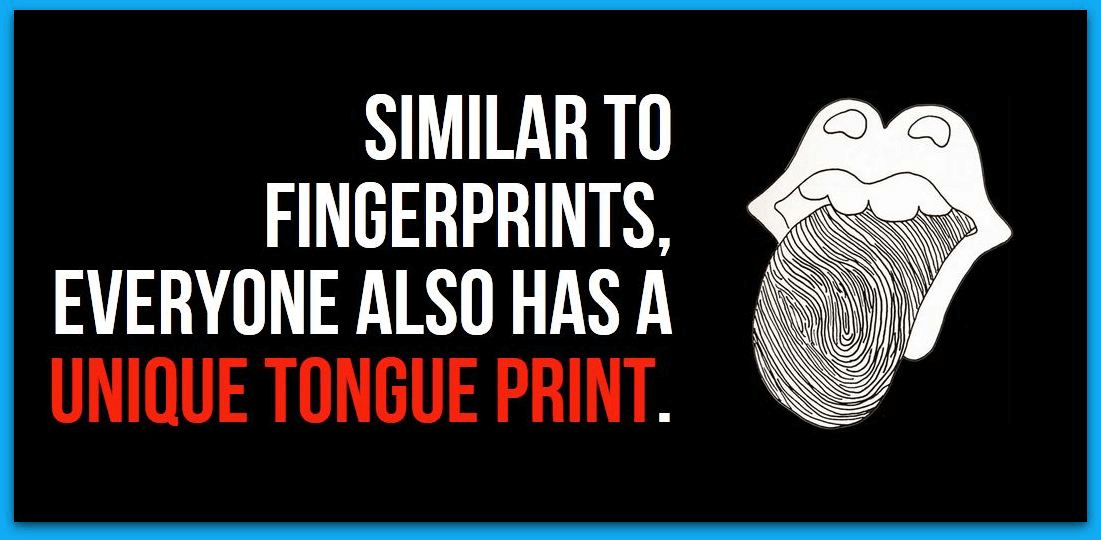Like fingerprints everyone s tongue print is different

Like fingerprints, everyone’s tongue print is different.

When it comes to individuality, most people think of fingerprints as the go-to example. However, there is another unique identifier that many people often overlook - our tongues. Just like how no two fingerprints are the same, each person has a distinct tongue print that sets them apart from everyone else.
Research has shown that the anatomical characteristics of the tongue make it an exceptional tool for identification purposes. In fact, tongue prints are becoming increasingly popular in the field of forensic science, where experts are unlocking the potential of this unique feature to solve crimes.

Similar to fingerprints, tongue prints are made up of a series of ridges and grooves that form distinctive patterns. These patterns vary from person to person, ensuring each individual has their own unique tongue print. This uniqueness makes it an ideal tool for identification purposes, as it can accurately differentiate between individuals.
The study of tongue prints, known as glossoscopy, involves analyzing the unique features of the tongue’s surface. These features include the number and shape of papillae, the presence of fissures or cracks, and the distribution of taste buds. By examining these characteristics, forensic experts can create a detailed profile of an individual’s tongue print.
Forensic scientists are finding tongue prints particularly useful in cases where other forms of identification may be difficult or impossible. For example, in situations where the fingerprints are smudged or destroyed, the tongue print can still provide valuable information. Additionally, the ability to collect tongue prints is non-invasive, making it an ideal option for identifying infants or deceased individuals.
Moreover, tongue prints have also found practical applications beyond forensic science. They are increasingly being explored for biometric authentication purposes, such as unlocking smartphones or accessing secure areas. By utilizing tongue prints as a unique identifier, it is possible to ensure enhanced security and prevent unauthorized access.
It is worth noting that while tongue prints are indeed unique, they are not as widely recognized or utilized as fingerprints. The field of glossoscopy is still in its infancy, and more research is needed to fully explore its potential. However, as technology advances and awareness grows, we may soon witness the widespread adoption of tongue prints as a reliable form of identification.
In conclusion, just like fingerprints, everyone’s tongue print is indeed different. With its unique ridge patterns and other distinguishing characteristics, the tongue proves to be a valuable tool for identification purposes. As research continues to uncover the intricacies of tongue prints, we may witness their expanded use in various fields, from forensic science to biometric authentication.
Source: DentistryIQ
Share
Related Posts
Quick Links
Legal Stuff

